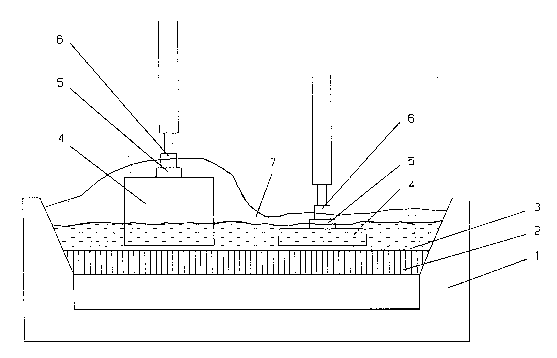Une partie des informations de ce site Web a été fournie par des sources externes. Le gouvernement du Canada n'assume aucune responsabilité concernant la précision, l'actualité ou la fiabilité des informations fournies par les sources externes. Les utilisateurs qui désirent employer cette information devraient consulter directement la source des informations. Le contenu fourni par les sources externes n'est pas assujetti aux exigences sur les langues officielles, la protection des renseignements personnels et l'accessibilité.
L'apparition de différences dans le texte et l'image des Revendications et de l'Abrégé dépend du moment auquel le document est publié. Les textes des Revendications et de l'Abrégé sont affichés :
| (12) Demande de brevet: | (11) CA 2119100 |
|---|---|
| (54) Titre français: | DISPOSITIF DE PROTECTION DE SUPPORT D'ANODE |
| (54) Titre anglais: | DEVICE FOR THE PROTECTION OF ANODE HANGER NIPPLES |
| Statut: | Réputée abandonnée et au-delà du délai pour le rétablissement - en attente de la réponse à l’avis de communication rejetée |
| (51) Classification internationale des brevets (CIB): |
|
|---|---|
| (72) Inventeurs : |
|
| (73) Titulaires : |
|
| (71) Demandeurs : |
|
| (74) Agent: | SMART & BIGGAR LP |
| (74) Co-agent: | |
| (45) Délivré: | |
| (22) Date de dépôt: | 1994-03-15 |
| (41) Mise à la disponibilité du public: | 1994-09-18 |
| Licence disponible: | S.O. |
| Cédé au domaine public: | S.O. |
| (25) Langue des documents déposés: | Anglais |
| Traité de coopération en matière de brevets (PCT): | Non |
|---|
| (30) Données de priorité de la demande: | ||||||
|---|---|---|---|---|---|---|
|
A B S T R A C T
The present invention concerns a device for protecting
anode hanger nipples when manufacturing aluminium in a
Hall-Heroult electrolysis process, made of a composite
material consisting of carbon residues, hardening
material, water and a catalyst. The device is
characterised by two or more prefabricated,
dimensionally stable parts which are designed to be
joined in an arrangement in situ.
Note : Les revendications sont présentées dans la langue officielle dans laquelle elles ont été soumises.
Note : Les descriptions sont présentées dans la langue officielle dans laquelle elles ont été soumises.

2024-08-01 : Dans le cadre de la transition vers les Brevets de nouvelle génération (BNG), la base de données sur les brevets canadiens (BDBC) contient désormais un Historique d'événement plus détaillé, qui reproduit le Journal des événements de notre nouvelle solution interne.
Veuillez noter que les événements débutant par « Inactive : » se réfèrent à des événements qui ne sont plus utilisés dans notre nouvelle solution interne.
Pour une meilleure compréhension de l'état de la demande ou brevet qui figure sur cette page, la rubrique Mise en garde , et les descriptions de Brevet , Historique d'événement , Taxes périodiques et Historique des paiements devraient être consultées.
| Description | Date |
|---|---|
| Inactive : CIB de MCD | 2006-03-11 |
| Le délai pour l'annulation est expiré | 1996-09-17 |
| Demande non rétablie avant l'échéance | 1996-09-17 |
| Réputée abandonnée - omission de répondre à un avis sur les taxes pour le maintien en état | 1996-03-15 |
| Inactive : Demande ad hoc documentée | 1996-03-15 |
| Demande publiée (accessible au public) | 1994-09-18 |
| Date d'abandonnement | Raison | Date de rétablissement |
|---|---|---|
| 1996-03-15 |
Les titulaires actuels et antérieures au dossier sont affichés en ordre alphabétique.
| Titulaires actuels au dossier |
|---|
| NORSK HYDRO A.S. |
| Titulaires antérieures au dossier |
|---|
| EINAR BAKKE |